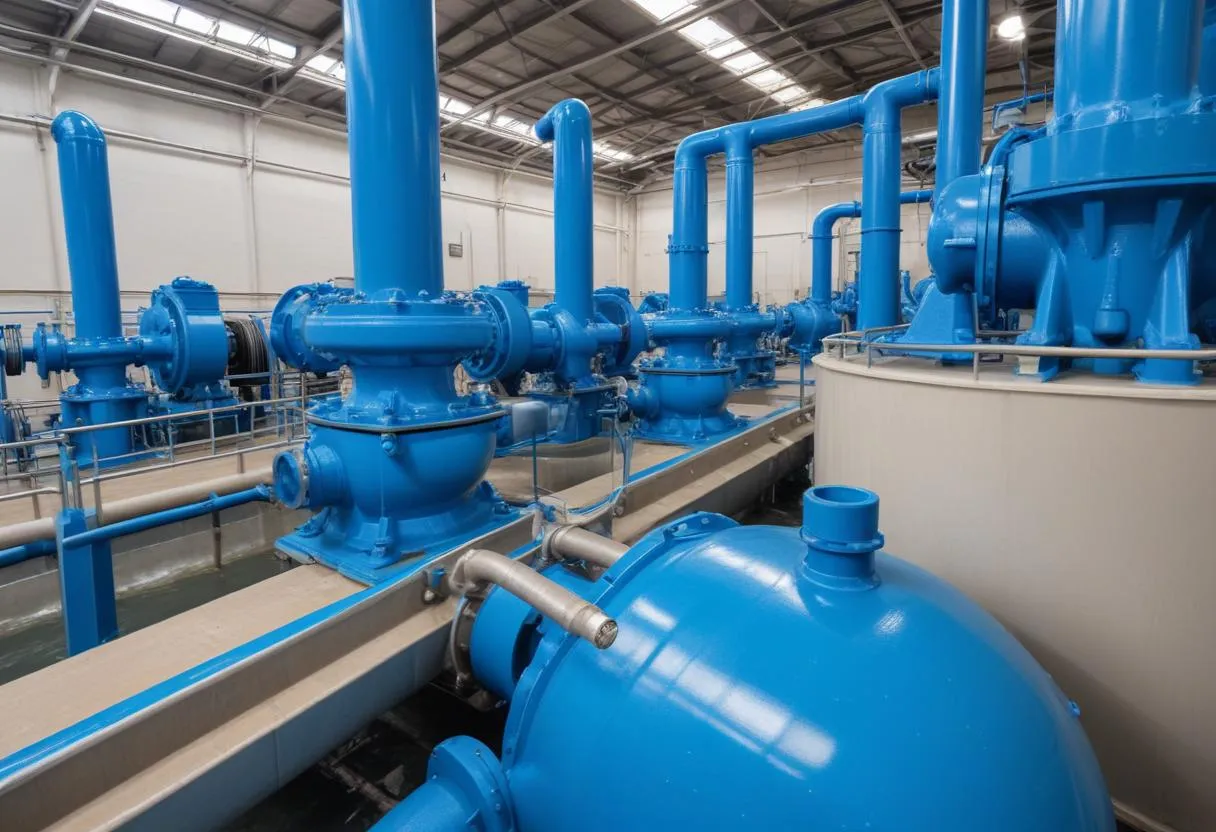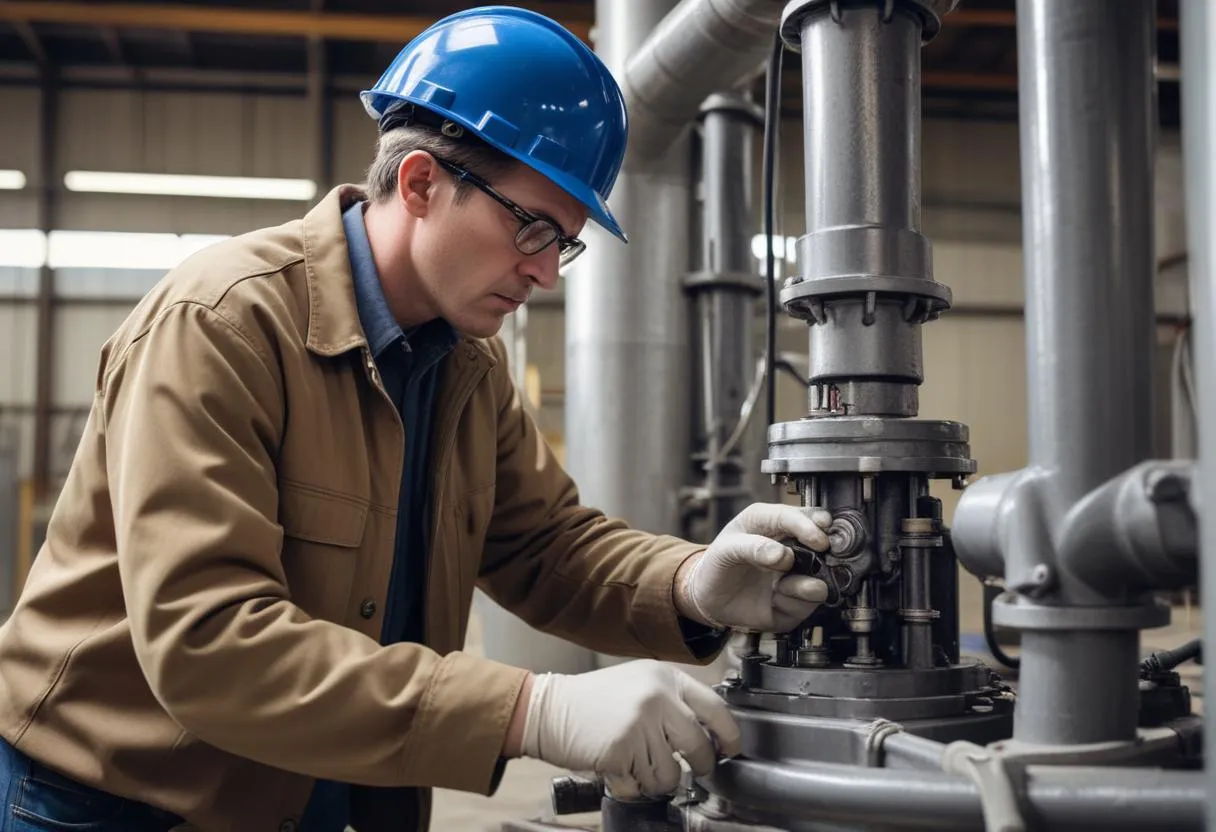 In the water treatment industry, several types of pumps are employed based on their operational capacity and the specific treatment process they are meant to support. These include centrifugal pumps, positive displacement pumps, submersible pumps, and diaphragm pumps. Each type has distinct mechanisms and applications suited for different phases of water treatment.
In the water treatment industry, several types of pumps are employed based on their operational capacity and the specific treatment process they are meant to support. These include centrifugal pumps, positive displacement pumps, submersible pumps, and diaphragm pumps. Each type has distinct mechanisms and applications suited for different phases of water treatment.
Centrifugal Pumps: are the most commonly used pumps in water treatment plants because of their suitability for transporting large volumes of water. They operate by converting rotational kinetic energy to the hydrodynamic energy of the water flow. The main components of these pumps are the impeller and the casing, which guide the water smoothly through the pump while gaining pressure and velocity.
Positive Displacement Pumps: provide a fixed amount of flow through the mechanical contraction and expansion of a flexible diaphragm. This type of pump is particularly useful for dealing with viscous fluids or where a precise volume of fluid is required, making it an essential part of dosing and chemical injection processes.
Submersible Pumps: are specifically designed to be submerged in the liquid that is to be pumped. These pumps avoid pump cavitation, a problem associated with a high elevation difference between the pump and the fluid surface. Submersible pumps are widely used for their efficiency and are particularly effective in deep well pumping and in handling sludge.
Diaphragm Pumps: also known as membrane pumps, operate on a simple mechanism involving the reciprocation of a membrane to create a variable volume space on one side of the membrane, enabling suction and discharge. These are highly efficient for chemical dosing purposes due to their resistance to aggressive chemicals and their ability to provide controlled flow rates despite variations in discharge pressure conditions.
Here is a simple comparison table summarizing the applications of each pump type within a water treatment setting:
| Pump Type | Uses in Water Treatment |
|---|---|
| Centrifugal Pumps | Water intake, filtration, and circulation processes |
| Positive Displacement Pumps | Chemical dosing, sludge handling |
| Submersible Pumps | Removing water from wells, handling raw sewage |
| Diaphragm Pumps | Chemical dosing, hazardous fluids handling |
- Centrifugal pumps are best for large-scale movement of water with low viscosity.
- Positive displacement pumps excel in accurate dosing applications and handling thick slurries.
- Submersible pumps perform well under conditions where the pump needs to be positioned within the fluid being pumped.
- Diaphragm pumps are preferred for their durability and effectiveness in transferring fluids containing particulates or hazardous substances.
With such diverse applications and functionalities, the selection of the right type of pump in water treatment facilities significantly influences the efficiency and effectiveness of the treatment process.
Mechanisms of action for water treatment pumps
Pumps in water treatment facilitate movement of fluids through various stages of treatment, each utilizing different mechanisms of action to ensure efficiency and accuracy in their specific roles. Although the types of pumps vary, their mechanisms of action are fundamental to understanding how they contribute to water treatment processes.
Centrifugal pumps operate on the principle of centrifugal force. When the pump is activated, the motor drives the impeller to rotate, pushing water outward from the center of the impeller due to centrifugal force. This movement increases the pressure and velocity of the water, propelling it through the pump casing and into the discharge piping. The efficiency of a centrifugal pump is influenced by the speed of the impeller and the design of the pump casing which guides the water smoothly, reducing turbulence and enhancing flow rate.
Positive displacement pumps function by trapping a fixed volume of fluid then forcing (displacing) that trapped volume into the discharge pipe. Unlike centrifugal pumps, these pumps deliver the same flow rate at a given RPM no matter what the discharge pressure is. There are two main types of positive displacement pumps used in water treatment:
- Rotary pumps, where displacement is achieved by rotary elements such as gears or lobes.
- Reciprocating pumps, which use pistons, plungers, or diaphragms that reciprocate back and forth, creating a varying volume within the pump chambers.
Submersible pumps function while being submerged in the fluid they are pumping. This proximity to the liquid ensures that these pumps are not susceptible to pump cavitation—an issue common in surface pumps when there is a significant elevation difference between the pump and the liquid surface. Submersible pumps typically feature a hermetically sealed motor close-coupled to the pump body. The entire assembly is submerged in the fluid to be pumped, ensuring that pump cavitation is minimized and that the pump can operate at greater depths.
Diaphragm pumps work on a reciprocating mechanism where a flexible diaphragm moves back and forth to create a temporary chamber, which draws in and expels fluid through check valves to prevent backflow. The repetitive motion of the diaphragm, powered by air or hydraulic fluid, allows for precise control over the volume of fluid being pumped, making it ideal for dosing and metering applications where precision is critical. Diaphragm pumps are particularly valued for their dry running capabilities and resistance to corrosive substances.
| Pump Type | Mechanism of Action |
|---|---|
| Centrifugal Pumps | Utilizes centrifugal force induced by rotational motion of an impeller to increase water velocity and pressure. |
| Positive Displacement Pumps | Traps and forcibly displaces fluid in a cyclic intake and discharge motion. |
| Submersible Pumps | Operates submerged, preventing cavitation and efficiently handling deep fluids. |
| Diaphragm Pumps | Uses reciprocating diaphragms to pump fluid via controlled, variable chamber sizes. |
Understanding these mechanisms is crucial for selecting the appropriate pump for a specific water treatment application, ensuring both operational success and long-term reliability.
Maintenance and care for water treatment pumps
 Proper maintenance and care for water treatment pumps are essential to ensure their efficiency and extend their service life. Regular upkeep helps avoid breakdowns and minimizes operational costs by reducing the need for replacements and extensive repairs. Here are several key aspects of maintaining different types of water treatment pumps:
Proper maintenance and care for water treatment pumps are essential to ensure their efficiency and extend their service life. Regular upkeep helps avoid breakdowns and minimizes operational costs by reducing the need for replacements and extensive repairs. Here are several key aspects of maintaining different types of water treatment pumps:
Daily and Weekly Checks
- Monitor pump performance and noise levels to detect early signs of malfunction such as increased vibration or abnormal sounds.
- Inspect seals and bearings regularly for signs of wear and tear or leakage.
- Check lubrication levels and quality. Replenish or change lubricants according to the manufacturer’s guidelines.
Monthly Inspections
- Examine the pump casing, impeller, and other mechanical parts for corrosion or damage.
- Ensure all bolts and screws are tightened properly to prevent operational instability.
- Clean any clogged filters or screens that might impair the pump’s efficiency and increase the risk of overheating.
Annual Maintenance
- Disassemble the pump for thorough cleaning and detailed inspection of all components.
- Replace worn out parts such as seals and bearings to prevent sudden failures.
- Perform a complete system performance test to ensure the pump operates at optimal conditions.
Maintaining submersible pumps also includes ensuring the electrical integrity of its waterproof seals and checking for damage to the electrical cable connected to the pump.
For diaphragm pumps, special attention should be given to the diaphragm itself, as it is crucial for operation but prone to wear due to constant flexing. Check for brittleness, tears, or distortions.
| Component | Maintenance Action | Frequency |
|---|---|---|
| Seals and Bearings | Inspect and replace if needed | Monthly |
| Lubricants | Top-up or replace | As needed |
| Impeller and Pump Casing | Inspect for wear and corrosion | Monthly |
| Electrical Components (Submersible pumps) | Check for damage and water ingress | Annually |
| Diaphragm (Diaphragm pumps) | Inspect for damage, replace if necessary | Semi-annually |
Adhering to a well-planned maintenance schedule not only ensures optimal pump performance but significantly contributes to the overall reliability and efficiency of the water treatment process.